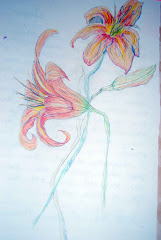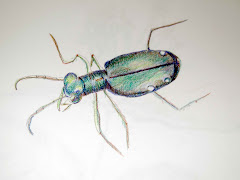





As summer begins to draw to a close, I begin to think about the monarch butterflies’ long journey that lay before them. Amazingly, though most of the generations of monarchs born throughout the summer, live only 2 weeks, this last generation lives an incredible 9 months! They start out like all the others: an egg, laid on a leaf, specifically a milkweed leaf (Asclepias syriaca) by a female Monarch (Danaus plexippus). She flies from leaf to leaf, checking with the sensors in her feet (like taste buds in our mouths) that she has the right plant, for only milkweed is acceptable. The egg is laid in a sticky substance so that it can’t be shaken off by wind or rain, and for extra protection, the female usually lays the egg on the underside of the leaf so that it won’t be easily detected.
It is interesting that the monarch has chosen this plant as its host plant, for milkweed has within its cells a carotenoid poison; most other insects that eat this plant will die, but the monarch butterfly is immune to its poison. In fact, both the caterpillar and the adult carry this toxin within their cells, so that they taste bad when eaten, and it can even make their predators ill. Once having eaten a monarch, should they survive, they learn not to eat this animal again. This is why monarchs are nature’s traditional warning color: orange.
When they hatch, they are no bigger than the head of a pin, but their first job is to eat the shell from which they have hatched, for it is full of nutrients. As soon as they are able, they make their way to the edge of the leaf, where it is most tender, because at this stage, their jaws are so small they can only scrape the leaf with their mouth.
But as they grow, and begin to be able to chew, they develop voracious appetites, and soon grow too large for their skin. Because their exoskeleton is so hard (for protection from predators) they need to shed their skin, or molt, on a regular basis, for a total of five molts during this stage of their life. Each time, the caterpillar emerges from the new skin, larger, and more mature.
This process continues for about two weeks, when finally it’s ready for the next stage of its development. It carefully selects a twig, or some sturdy leaf stem and attaches itself. It latches on by means of a little button of silk, which it spins, (from glands near its mouth called spinnerets) and hangs itself, upside down, (called the "J" form) and attaches itself to the button of silk.
Under the old skin, it is a soft, green, almost shapeless lump. But then it begins to dry and harden, and shimmering golden spots begin to appear. This green form is the chrysalis, and its golden spots are what gave the monarch its name, for, to those who named it, the gold looked real, worthy of a king.
During pupation the caterpillar does not eat or move. It hangs silently on the stem, its green color helping to camouflage it, for two more weeks. Soon, it begins to change color: first, a beautiful blue-green teal, and then, it begins to be transparent. As you look inside the chrysalis, the black and orange wings of the butterfly begin to be visible. When this happens, we know that the butterfly is about to emerge.
First, the chrysalis begins to move, gently swaying back and forth on the branch, but then the movements become quicker, and suddenly, the chrysalis splits open. The butterfly begins to struggle its way out: first, the head and legs, and then, its wings.
When it first emerges, its wings are wet, and hang limply about its body. But then its swollen abdomen begins to pump fluids into its wings; they begin to fill out, and then, as time passes, to dry. The butterfly must hang there for about four hours to allow its wings to dry thoroughly. As it waits, basking in the sun, its body temperature slowly raises, allowing it to reach a warm enough temperature so it can finally fly.
Most monarchs live only two weeks, but those born at the end of the summer, in the Eastern United States, migrate nearly two thousand miles to the Sierra Madre Oriental Mountains in Mexico. (Monarchs in the western parts of the U.S. migrate to a place in Santa Cruz, California.)
Here, they spend their time in a sleepy state, hardly moving, accept to move themselves into the sunlight as it climbs higher in the sky during the day. Once the monarchs have spent the cold winter months in this safe place, they begin the long journey back to the home from which they had come.
As they make their journey, they mate, lay new eggs, and the cycle begins again. The butterflies which have hibernated for the winter, are not the same ones who make it all the way back to the north, but generations of their offspring continue to travel northward, until finally they have reached the same area that the hibernating butterfly started from!





Gorgeous drawings and photos! That's amazing that milkweed is poisonous to most other insects!
ReplyDeleteHi, Jackie - thanks for visiting my blog and telling me about yours. I see that you have artistic skills - how lucky you are!
ReplyDeleteAnd you really know your butterfly stuff! It was nice to read about monarchs in more detail than most monarch writings. It's the little details that are often omitted that make learning natural history more interesting.
Thanks for sharing and welcome to the world of blogging!
Thank you Ellen for your comments. Two books that I read were particularly interesting: Chasing Monarchs by Robert Michael Pyle, and Four Wings and a Prayer by Sue Halpern. I recommend them both highly!Jackie
ReplyDelete